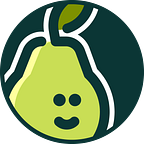In our last post, I wrote about how learning arbitrary things is much harder than learning meaningful things. Culturally, I think we are accepting this fairly broadly — we basically know and believe now that rote memorization isn’t the most effective way to learn.
It’s not just that rote memorization is harder than learning things that are connected, learning in this way also makes it less likely that we will be able to apply our learning or skills to the next thing to be learned. Basically, studies about how we learn show that there is something important about stepping back and considering how we learned. Then, when we face the next new concept, we are better able to use effective learning strategies.
Let’s use our example from last week about introducing supply and demand through the concept of the lemonade stand. Here are some actions a student might do in the course of learning about supply and demand:
- Write down definition of Supply and Demand
- Write down example of Supply and Demand
- Review notes about concept
- Take a test
Now let’s layer in some extra actions that tap into that prior knowledge and make supply and demand relatable:
- Try to figure out how much lemonade they would want to make for a lemonade stand
- Try to figure out how much they would charge for the lemonade
- Try to figure out if this would change if someone opened another stand across the street
- Hear and record definition of Supply and Demand
- Write down how the lemonade stand question are an example of Supply and Demand
- Review notes about concept
- Take a test
Here we see that the student is grappling with the concept before trying to learn the definition. By the time the definition comes along, the student can write down how what they were just figuring out is the practice of supply and demand (instead of writing down an arbitrary example).
Finally, let’s layer in some metacognitive actions a student could do in this scenario.
- Try to figure out how much lemonade they would want to make for a lemonade stand
- Try to figure out how much they would charge for the lemonade
- Write down how did they decided how much to make and charge
- Try to figure out if this would change if someone opened another stand across the street
- Hear and record definition of Supply and Demand
- Write down how the lemonade stand questions are an example of supply and demand
- Write down what things they find confusing about the concept
- Write down questions they have about how the lemonade stand was an example of Supply and Demand
- Review notes about concept
- Explain concept to someone else
- Take a test
- Write down what study methods were helpful to them and which weren’t
Here we see that at several moments in the learning process, the student is actively reflecting on what they learned and how they learned. Whereas in the very first iteration, the student is loading up an arbitrary fact into their short-term memory, in this third iteration the arbitrary definition has been layered into a strong scaffold of relatable examples and long-term learning strategies. In reflecting on what’s confusing and what questions they have, the student is becoming aware what holes there are in their understanding. This awareness will make them better able to fill in those gaps and face the next learning opportunity with a stronger scaffold to build upon.
